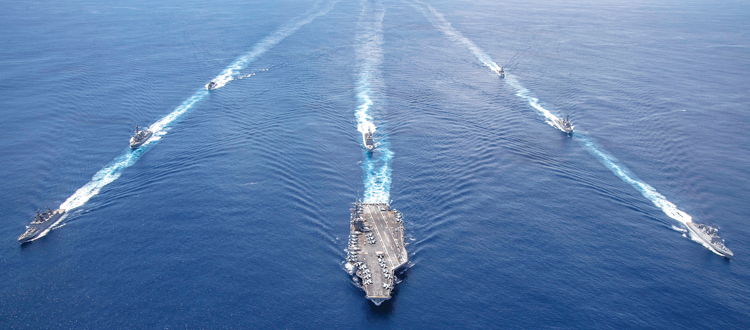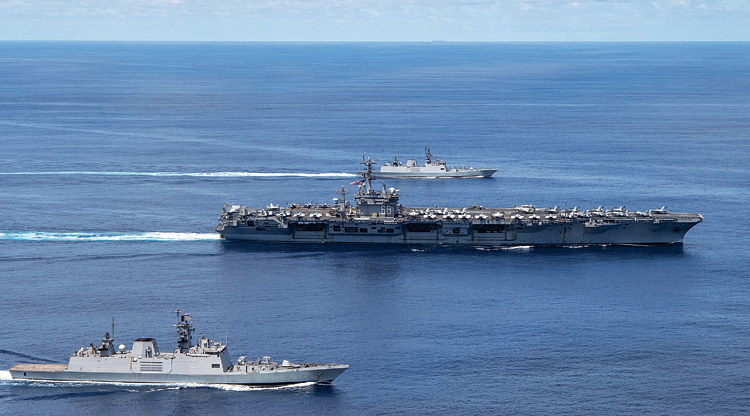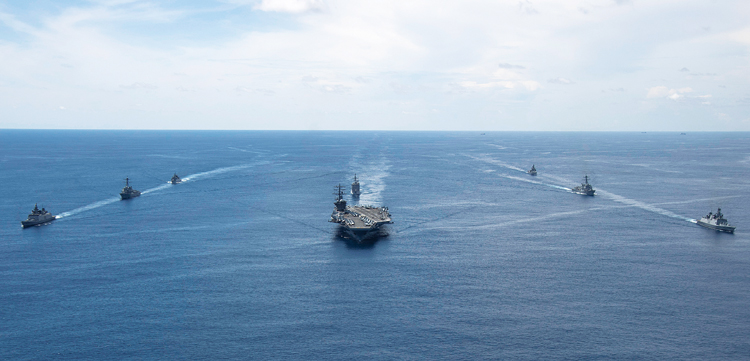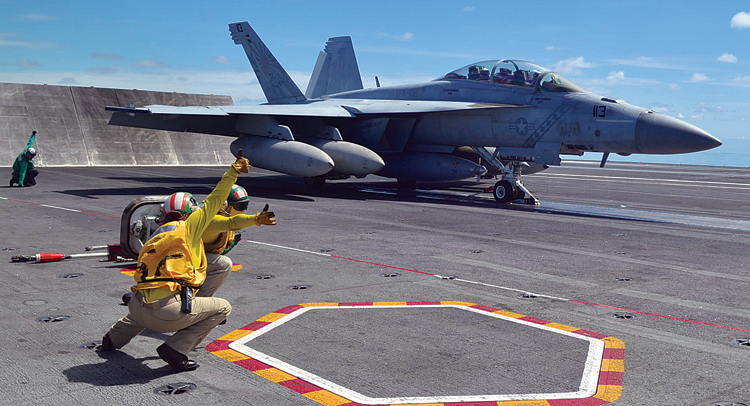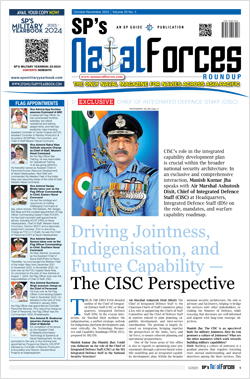INDIAN ARMED FORCES CHIEFS ON OUR RELENTLESS AND FOCUSED PUBLISHING EFFORTS

The insightful articles, inspiring narrations and analytical perspectives presented by the Editorial Team, establish an alluring connect with the reader. My compliments and best wishes to SP Guide Publications.

"Over the past 60 years, the growth of SP Guide Publications has mirrored the rising stature of Indian Navy. Its well-researched and informative magazines on Defence and Aerospace sector have served to shape an educated opinion of our military personnel, policy makers and the public alike. I wish SP's Publication team continued success, fair winds and following seas in all future endeavour!"

Since, its inception in 1964, SP Guide Publications has consistently demonstrated commitment to high-quality journalism in the aerospace and defence sectors, earning a well-deserved reputation as Asia's largest media house in this domain. I wish SP Guide Publications continued success in its pursuit of excellence.
- Global Partners Urged to Tap India's Shipbuilding Potential: Rajnath Singh at Samudra Utkarsh
- All about HAMMER Smart Precision Guided Weapon in India — “BEL-Safran Collaboration”
- India, Germany deepen defence ties as High Defence Committee charts ambitious plan
- G20 Summit: A Sign of Global Fracture
- True strategic autonomy will come only when our code is as indigenous as our hardware: Rajnath Singh
- India–Israel Joint Working Group Meeting on defence cooperation to boost technology sharing and co-development
Naval Exercises
A Timely Meeting of Minds
The Indian Navy - US Navy Passex conducted on July 20, 2020 was a timely initiative. With China persisting with its confrontational expansionism even in the middle of a global pandemic, it was important that other strong protagonists of current geopolitics, like India and USA, conveyed a meeting of minds.
Maritime operations, especially involving large numbers of ships, submarines and aircraft is a complex affair. Big Fleets physically occupy large parts of the oceans as they traverse, and remain capable of monitoring and influencing events within greater amount of areas on the surface of the sea, in the air above and under water. Efficient Doctrines, Communications, information sharing, situational awareness, weapon and sensor placements, replenishment and inter Fleet redeployments are critical elements of successful maritime operations.
“I want to highlight our increased defence cooperation with India, one of the all-important defence relationships of the 21st century. We conducted our first ever joint military exercise last November. As we speak, the USS Nimitz is conducting combined exercises with the Indian Navy in the Indian Ocean, demonstrating our shared commitment to stronger naval cooperation and supported by free and open Indo-Pacific.” —US Defense Secretary Dr Mark T. Esper
Since each Navy tends to develop what is optimum for themselves under their geographical, geopolitical, technological, fiscal and operational realities, operating philosophies differ from Navy to Navy. Navies of friendly nations which share operational challenges therefore conduct joint exercises to learn about each other’s operational philosophies and procedures, and to gain familiarity. The aim is to prepare for cooperation at sea and joint operations if necessary. This is not easy to achieve.
The centrality of the Indian Ocean to world trade, the position of the Indian Navy as the dominant Navy in the IOR and Indian Navy’s sheer competence has resulted in a large number of Navies teaming up with the Indian Navy for joint exercises, for many decades. With several editions of Exercise Malabar with US Navy behind us since 1992, much familiarity exists between Indian Navy and US Navy. Passexes, viz, exercises between forces as they pass by each other, as the term suggests, are not planned well in advance and are quickly rustled up events. That a Passex involving the kind of large formations that we saw on July 20 was possible, is proof, that the Indian Navy and US Navy are comfortable with each other and can easily combine in operations if and when the need arises. It was a timely signal to those who require it.
US Navy and Indian Navy at Sea
